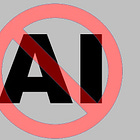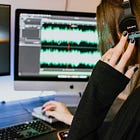Ethical Shoestrings
Anyone else getting started with writing and publishing on a shoestring budget, but wanting to only use ethical tools?
This page lists the “cheap-and-good” ethical tool stack I (Karen Smiley) am using on Agile Analytics and Beyond (AAaB) and . Unless otherwise noted, I am using FREE plans or licenses for all tools.
I’ll update the page as I get further into my writing adventures and my toolbox evolves. Let me know if you find it useful or have suggestions 😊
I use this table to list tools I use or I’m considering using. My criteria for adding a tool to this shoestring list are simple.
It must be ethically developed and operated (as far as I can tell).
It should be either free or extremely affordable.
It must add value to my writing for me or for my readers/listeners.
I’m also keeping in the table tools I’ve chosen to stop using, with a comment on why, in case that’s helpful to anyone else.

General principle: AI has been my professional focus for many years. Based on what I know about AI and the ethics (or lack thereof) of AI companies, I don’t use AI to do my writing for me. All of my posts are 100% human-authored and human-illustrated.

Privacy note: Unless the tool provider’s written policies say otherwise, the safest assumption is that any provider of a free tool is capturing the texts and info you share when using it. They may use your content to make money via ads, for internal purposes (e.g. training an AI model), or by selling it to a data broker.
I plan to use these tools on posts I will publish publicly, and I own all rights to the content. So privacy isn’t a big concern. If your needs are different (or my needs change), free tools may not be a good choice. Always check the privacy and data sharing policies on any tools you consider using.
If a tool is free, “you’re not the customer, you’re the product.” (Tom Johnson, 2001)
Credits for all digital resources which require attribution are listed here for 6 ‘P’s in AI Pods (AI6P) (credits are similar for Agile Analytics and Beyond).
I’d welcome any suggestions or feedback on other tools that deserve to be considered!
References
Thanks for reading Agile Analytics and Beyond! If you enjoyed this article, I’d love to have your support via a heart, share, restack, Note, one-time tip, or voluntary donation via paid subscription!









![9 ethical genAI music tools [Unfair Use? series, PART 3] 🗣️](https://substackcdn.com/image/fetch/$s_!dPys!,w_140,h_140,c_fill,f_auto,q_auto:good,fl_progressive:steep,g_auto/https%3A%2F%2Fsubstack-post-media.s3.amazonaws.com%2Fpublic%2Fimages%2F91c8b468-57fd-4baa-b87f-dc36aff28175_1920x1275.jpeg)

